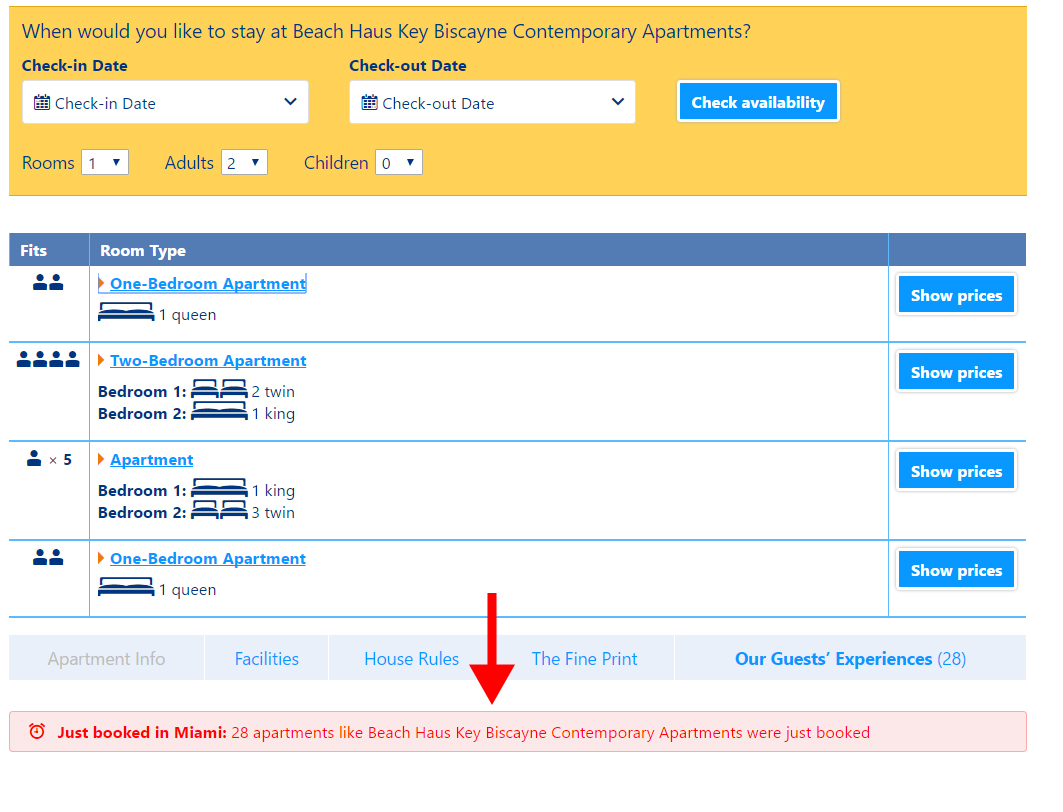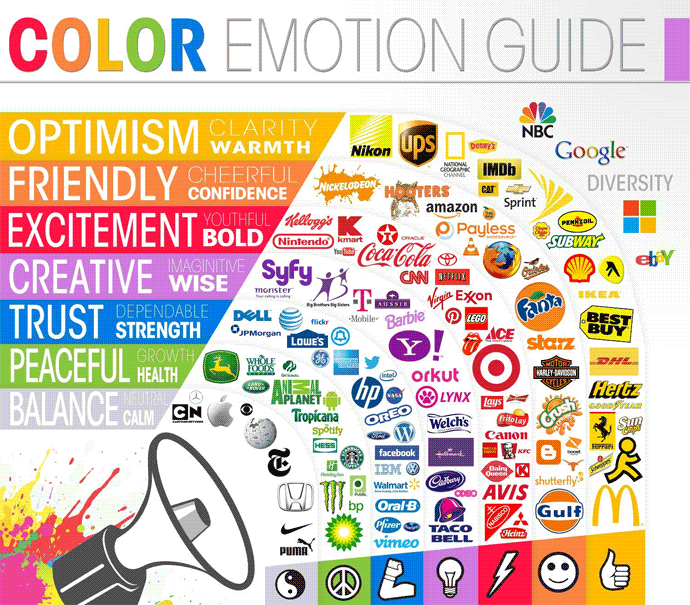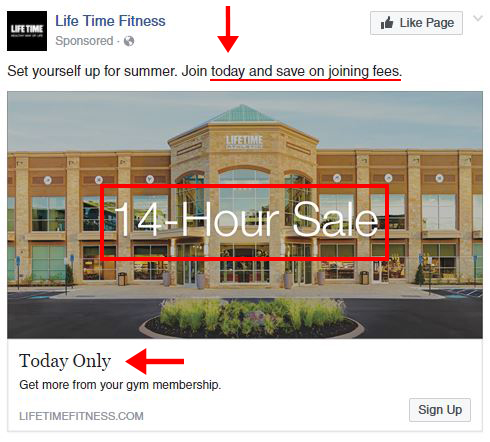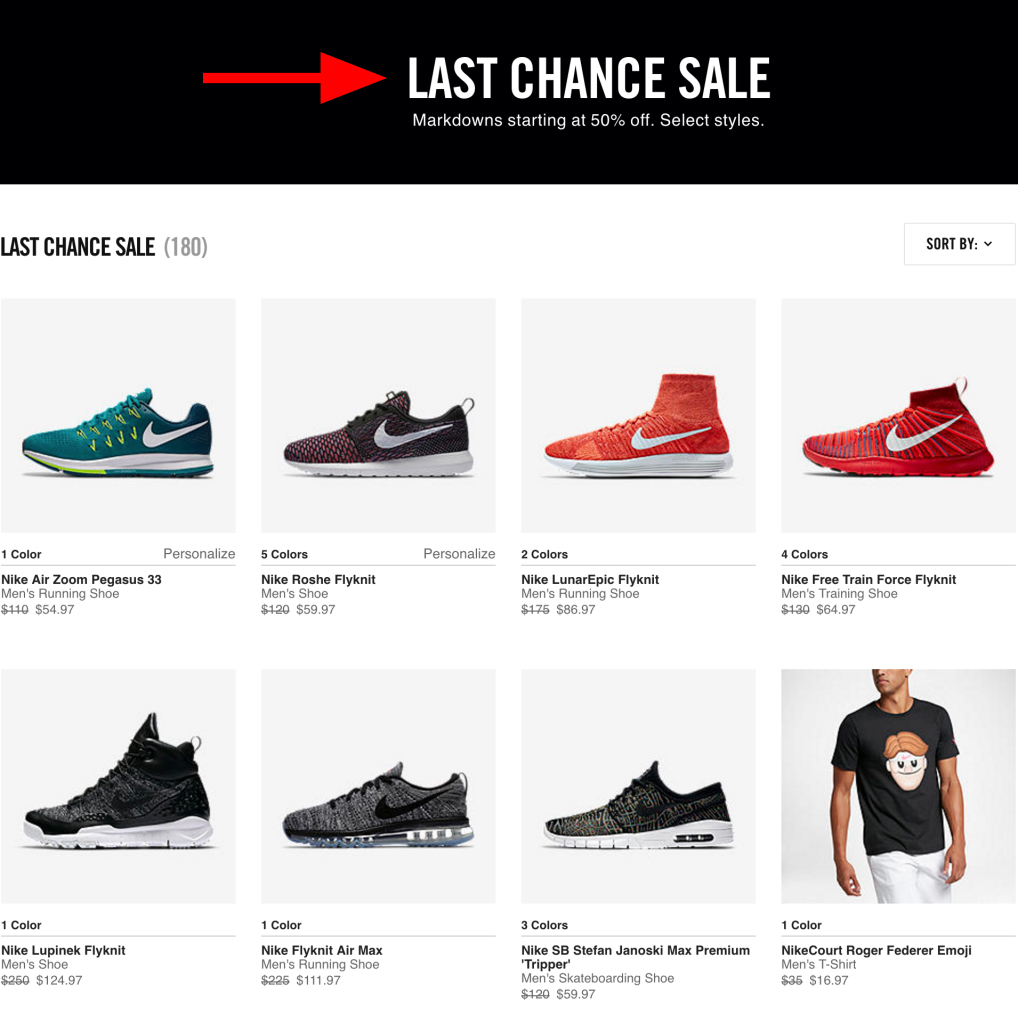How to Use Urgency and Scarcity to Drive More Conversions
‘Hurry! Limited time offer! While supplies last!’
How do words like these turn browsers into buyers?
What makes people to buy?
It’s a question that both marketers and psychologists have been pondering for hundreds of years. There are a lot of reasons why we we buy. We buy because a product makes our lives easier, or because it’s superior than it’s competitors. We buy because it makes us feel good, look better, seem unique.
In other words, the Perceived Value of a product is what motivates people to buy. How can marketers create or enhance Value and get consumers to stop ‘just browsing’ and to start buying, now? We look to human behavioral psychology for answers.
What is Scarcity & Urgency?
In 1975, researchers Worchel, Lee and Adewole tested the notion of scarcity (or limited resources) and the effect scarcity has on how people value the resource. They ran an experiment that showed a group of people two identical glass jars filled with cookies. The single difference: one jar contained 10 cookies, the other only had 2 left.

Even though the jars and the cookies themselves were exactly the same, participants valued the near-empty jar more highly. In other words, the scarcity of the cookie supply affected their perception value. The low-supply cookie jar is perceived as tastier, hence the preference. The results of the experiment verify the commodity theory, in which the psychological effects of scarcity is the perceived enhanced value or desirability of anything that can be possessed.
Scarcity is a marketing and sales tactic closely related to Urgency as the use of scarcity creates urgency. Behavioral psychologists explain that urgent situations often cause humans to suspend logical, rational thought in favour of acting quickly for some sort of benefit.
Why does it work?
Together, scarcity and urgency work together to increase an offering’s importance – it’s Perceived Value.
For example, limiting availability (scarcity) or limiting time increases urgency and drive’s prospects to act now, rather than at some obscure time later causing them to miss the opportunity. Trigger words like “act now,” “low stock levels,” or “valid one day only” also work to create urgency.
Scarcity can create a number of illusions that increases a product’s Perceived Value and helps drive conversions.
1. The Illusion of Exclusivity
The famous Hermès Birkin bag.
Less availability, supply, or controlled distribution creates the idea of rarity and the rarer an item, the more exclusive it appears. The item becomes a status symbol. Take the Hermes Birkin bag for example. The coveted designer handbag costs between $30,000-$150,000 US and waiting lists can be years long. Limited quantities and unpredictable distribution schedules create the illusion of exclusivity to drive sales.
2. The Illusion of Increased Value

Supply vs. Demand a la Kramer.
Remember the cookie experiment? Participants reported that the cookie jar with fewer goods inside must be the tastier cookie, even though they were exactly the same cookies. This stems back to basic economics: less supply increases demand. Low-in-supply items can command higher prices regardless of it’s utility level, but consumers will put up with higher prices because the item is seen as having more value (The Snob Effect).
3. The Illusion of Increased Desirability

Peer Pressure/Bandwagon Effect
Scarcity can create the illusion of more desirability because increased demand suggests popularity. This is sometimes referred to as the Bandwagon Effect. Excessive demand induces others to follow the same behavior, often irrationally and out of conformity (bandwagon). Case and point: the iPhone and it’s popularity with each successive generation, despite having only some incremental added value and capabilities which competing brands already possessed.
How do you create Scarcity and Urgency in Digital Marketing?
Let’s breakdown how you can apply scarcity and urgency tactics in digital marketing to drive more conversions.
1. Use Trigger Words
Using action and time-related words in your ad copy will help boost the urgency to buy. Triggers words that indicate a great opportunity is ending soon include:
- Hurry!
- Limited Time Offer
- Act Now
- Flash Sale
- Quick!
- Buy Now
- Instantly Save
- Now
- Today


“Join Now” in this Starbuck’s creative and “Shop Now” in this Adidas creative functions to get people to click, immediately. It’s not just “Join” or “Shop” whenever you want – do it NOW.
Using urgency inducing terms to specify when something is ending, or when buyers should act is the difference between a sale today and (maybe) a sale sometime in the unknown future.
2. Set a Deadline
Setting a time limit for an offer or sale really pulls attention to the importance of the opportunity. In this first creative for Life Time Fitness, urgency is created in two ways. First, through the headline which explains the long-term positive effects of joining now rather than later. Second, the time limit imposed is only 14 hours – that’s a very specific and short window frame that allows for consumers to make a purchasing decision. Third, this deadline is emphasized as the offer is in fact only available “today.” Here today, gone tomorrow, so consumers have to act fast.
This 24 hour flash sale newsletter is also extremely effective in creating a sense of urgency by setting a timeline. The sale ends exactly at 10 AM on Friday. The LCBO, on the other hand tells you that these offers are literally for a “Limited Time Only” so consumers have to act now or miss out on savings.
3. Use a Timer or a Countdown
Timers and countdowns work similarly to a deadline, but may be even more effective as they’re visual, current, and spells out exactly how much time is left before something bad happens. Often associated with the likes of Tom Cruise or Keanu Reeves diffusing a bomb on an out-of-control-speeding bus, in the case of marketing the ‘bad thing’ that happens is a missed buying opportunity.
JustFab does a great job to push visitors through the last conversion hurdle – the point at which visitors review their shopping card and often remove items. Countdowns effectively create a sense of urgency that tells visitors they only have so much time to reserve the item before it disappears from their cart is a great conversion motivator. Losing something is much more painful than gaining something.
4. Show Stock Limitations
Just as in the Hermes back, manipulating stock availability or distribution builds scarcity and can drive conversions. ASOS does so by disclosing the stock levels that remain for their products.
5. Added Incentive with Deadlines
Amazon also follows a similar tactic by showing stock levels. However, Amazon takes it a little further by creating an added sense of value for visitors to get them to convert faster. Amazon sets a ‘possibility’ date rather than a due date for when a buyer can have a product in their hand if only they would buy the item within this specified time frame. Get the item faster, if you buy it sooner.
6. Highlight Product Popularity
A lot of travel sites have excellent examples of this tactic in place where highlighting popularity sells more. Take Booking.com which shows you how many times a hotel room has been booked within the last 24 hours – reiterating not only how great this deal is, but how many other people thought this was a great deal too. It’s the Bandwagon effect in full effect.

 6. Use Colour Psychology
6. Use Colour Psychology
While we’re on the subject of using human behavioral psychology to help marketers sell better, consider also the principals of colour psychology. There’s a lot to be said about how colour influences the way we perceive things from the taste of food, to scent, to how something might feel and more. Colour influences the way we feel. For example, blue is often regarded as a calming colour of confidence and competence. Red is often seen as an aggressive colour, or the colour of sexual passion. Of course, culture, gender and individual lived-experiences will also inform how different colours affect you.
Brands, nonetheless, know the significance of colour psychology.

When building out your newsletters and most especially your CTA buttons, keep colour psychology in mind. Testing will be required here, depending on your brand and each of your offers to determine which CTA button colours will work best. But as a best practice for creating urgency, red is a great choice as it implies pressure, criticality, and excitement.
7. Loss Aversion
This was mentioned in passing previously, but psychologists really do agree that it’s particularly painful to lose something. Letting go of something, even if you don’t get any use out of it anymore, can be a painful process. The human tendency towards the ‘pain of losing’ therefore makes Loss Aversion a great marketing tactic to drive conversions.
The though of an offer being the last chance, or the opportunity being taken away is enough to create urgency and get visitors to buy now.
Can you overuse Scarcity and Urgency tactics?
Yes. If you always have a sale, or it’s always the ‘Last Chance’ to get in on a good offer then it’s not really a good offer. In fact, overusing scarcity tactics can cause people to lose trust in your business and even devalue your brand. Scarcity and urgency, after all, invents Perceived Value and the second that valuation drops, the tactic doesn’t work. If you announce you have a store closing sale every few months and then never close, then you’re doing it wrong.
So always keep your scarcity and urgency tactics legit. Put these tips into practice and start converting more visitors, now!
http://gph.is/19DCgZA
Want to learn more? Connect with our team at sales@clearpier.com
Why Canadian Advertisers Prefer Private Marketplaces
PMPs on the Rise as Ad Spend Grows to One Third of Programmatic Budgets
Private marketplaces (PMPs) have been a hot topic among advertisers and publishers for some time now. PMPs have been on the rise since 2011 and just last year, eMarketer reported that ad spending on PMPs in the United States hit $3.7 billion, up from $80 million in 2014.
In Canada, over a third (35%) of programmatic spend goes to private markets compared to the U.S which tops out at 9%. Canada’s penchant for PMPs may, in part, be due to the nation’s late adoption of programmatic. But there are good reasons for why Canadian advertisers’ prefer PMPs.
More Control
In comparison to public marketplaces, where the floor is open to everyone and there is little or no contact between buyer and seller, private marketplaces enable direct and ongoing relations.
Not only do PMPs function on an invite-only basis, they also allow advertisers to customize deals to fit their needs by pre-setting targeting parameters, floor rates, and content, and more. Buyers are also given the opportunity of first-hand access on premium inventory that isn’t available in public exchanges.
When asked about the benefits of PMPs, Sunil Abraham, CEO of ClearPier and former performance marketer commented, “Publishers also benefit from increased control over deals.” He added, “This is because understanding levels of demand also helps them reallocate inventory across their demand streams including PMPs, open marketplaces, programmatic direct and direct.”
The result? Publishers can get more out of their entire ad inventory.
More Insight
Transacting on PMPs allows for a relationship focused approach compared to an overly technology dependent strategy when it comes to programmatic.
Having direct relationships with publishers means advertisers can target audiences more precisely by activating first-party publisher data. In the landscape beyond Facebook, advertisers must rely on publishers for accurate, high-quality audience data to drive successful campaigns.
Getting regular access to reliable data and leveraging that data enables advertisers transacting in PMPs to optimize their targeting on-the-fly across all parameters from demographic, to geo-location, to audience behaviour, to device usage and more.
More Creativity
Media buyers sometimes take issue with the limiting effects programmatic can have on creativity. Big brands and agencies are particularly frustrated by this issue which can be a challenge in open markets. After all, they want to be able to deliver the least intrusive and best user experience across all streams and ad formats to maximize engagement.
Another benefit of transacting in PMPs is premium high-quality data can be leveraged to continuously optimize and perfect creative campaigns without sacrificing targeting accuracy. The ability to do custom executions including full page takeovers, custom content, and custom stand-alone units tailored across devices, is a premium advertisers are willing to pay. As mobile ad spend continues to balloon while the need for better mobile user experiences climb, brands are looking for more creative ways to reach audiences on mobile. Thus, the customization capability of PMPs is a critical way advantage.
More Brand Safety
The key differentiator and benefit of private marketplaces however lies in the confidence with which both buyers and sellers can enter into deals. Transparency drives success and maintains direct relationship in PMPs.
In PMPs, advertisers always know where and when an ad is going to be served and the context in which it will be displayed. This ensures that your ad only shares screen time with contextually safe, appropriate and relevant content – a benefit to both buyers and sellers that prioritize their brand image.
Working with premium, vetted site-lists with quality audiences is a huge advantageous for advertisers as well as this is the first level of security against ad fraud. When PMPs or third-parties are able to layer on additional anti-fraud security measures like Integral Ad Science and GeoEdge.
Premium Continues to Grow in Canada
The stats indicate that buying media in premium environments like PMPs is growing in Canada. For both advertisers and publishers, there is also the added benefit of pricing transparency.
Some have pointed out that PMPs pose a scalability issue. But many advertisers are opting to partner with third-parties with expansive premium site-lists and the technology to scale up.
“In private marketplaces there is more accountability on the participating parties,” Abraham commented. Abraham added, “For too long, advertisers and publishers have been dealing with the same issues: ad fraud, inaccurate data, and unfair pricing. Premium buying environments benefits buyers and sellers by ensuring the ad ecosystem is fair so you can buy and sell with confidence.”
The move to PMPs is the next big shift in the ad ecosystem as spend rises. As mobile and video channels continue to drive growth, we can bet that a premium-first approach will firmly dominate the Canadian advertising landscape.
Want to learn more? Connect with our team at sales@clearpier.com
More than a buzzword: Programmatic (Part 4: Control)
After identifying programmatic control issues in our last installment of More than a buzzword — we’re now ready to explore the solutions. By offering control to publishers and advertisers, programmatic advertising can execute enormous numbers of transactions with ease, speed and improved efficiencies making it the optimal tool for improving the bottom line in digital media.
“Programmatic can only be effective when the control levers are handed over to buyers and sellers,” explains Jagdish Narigara, ClearPier’s director of product management, “Platforms need to act as more than a service provider — they need to step up and mentor customers, facilitate deal conversations, provide smart insights, act as a neutral third party to manage digital assets as well as executing transactions per contract.”
When it comes to targeting a direct audience, programmatic is the clever solution for both advertisers and publishers as it’s best for direct response.

Let’s take a look at the publisher’s perspective
With more and more publishers getting on board with programmatic opportunity, folks are starting to understand the potential of optimizing their sales channels through this method.
When it comes to solutions for control, this is what publishers seem to desire:
- — Protection against inventory commoditization and price dilution while operating on automated algorithms
- — Establishing a managed gateway in efforts to provide single point of entry for every approved buyer where the inventory is traded at real-worth
- — To sell differentiated inventory through appropriate sales channels — they want to define buyer access priorities, bid bias and selling rules. Essentially enabling publishers to have their say in automated decision making processes at every sales decision
- — To define and implement quality standards for creative using programmatic controls to deliver safe and pleasant brand experiences
- — Control over their data — enforce stringent consumption policies and protect data leakages. “This is just pre-requisite,” says Narigara, “This would motivate them to overlay their first-party data over programmatically learned data and run audience-extension programs on programmatic. This is otherwise hard to imagine.”
- — Access to their performance and transaction logs to derive smart insights to validate and realign their programmatic strategy
- — By gaining control over propensity and probability acumen generated by programmatic algorithms, they want to produce more relevant and rewarding content to take their businesses to new levels.
Then there’s the advertiser’s perspective
“Advertisers have already tasted the fruits of programmatic,” says Narigara about programmatic’s growth in the industry, “They have an unmatched platform to justify and attribute every dollar spent.”
Programmatic is on the rise and is taking the advertising world by storm. In fact, according to a recent survey by World Federation of Advertisers (WFA), surveyed brands have doubled their investments in programmatic ad trading year on year and 44 per cent of their programmatic budget is targeting online display advertising.
“Advertisers want to take control back from the Trading Desks and intermediaries by establishing their independent Trading Desks (ITDs) and Demand-side Platforms,” says the WFA report, “And they have started moving towards that. In 2014, 30% of the surveyed brands have started using them.”
Highlighted solutions for advertisers are:
- — Offering bidding platforms with different objectives — from profit maximization and CTR maximization to win percentage maximization. The idea of having bidders aligning their objectives with impression bids in efforts to deliver advertiser objectives (not DSP’s/ATD’s)
- — Control over inventory selection; organized to avoid irrelevant queries with the ability to select which inventory to buy and ignore — they want to define inventory criteria via programmatic and expect machines to honour that
- — Protection against fraud — a programmatic platform that can help advertisers distinguish between human versus fraud traffic
- — Access to a publisher’s premium and guaranteed supply — and they want it through Unified Holistic Auction with multiple bid options for each tier of inventory. According to Narigara, auctions are currently taking place in Silos.
- — Advertisers also want access to their transaction logs, bid landscape, performance insights, conversion funnel discernibility and success/failure analysis — in efforts to derive new intelligence and better strategies and operations
Programmatic is the future of digital advertising.
“It is still in nascent stage, when it is implemented in its true sense, it will take the industry to new horizons!” says Narigara.
Share
[sgmb id=”1″]
More than a buzzword: Programmatic (Part 3: Control)
Having addressed issues and solutions with transparency, More Than A Buzzword is now focusing on issues with control in regards to programmatic advertising.
Programmatic isn’t just technology, it’s a business solution to Jagdish Narigara, ClearPier’s director of Product Management.
“It gives immense opportunity to define, implement and execute innovative business strategies — enabling innovative business models to tap into hidden potentials in media buying and selling,” says Narigara, “As with every business avenue, there comes issues with control.”
Both publishers and advertisers want control — but there are concerns from each side when opting for programmatic. Let’s take a look at some of the issues that may arise.
From the publishers perspective
For publishers who are looking to restructure and re-strategize their premium, exclusive and guaranteed sales channels, programmatic can help tap into that with high potential.
“Programmatic can bring synergies to enable holistic impression monetization strategy across different tiers of inventory,” says Narigara.
But there are still challenges in terms of control that publishers may face when operating programmatic.
There are concerns surrounding the possibility of machines eroding value — value being channel, content, audience or inventory, according a survey of AOL Platform Clients. This survey also revealed that 54% of publisher executives still have concerns/ambiguity over control provided by programmatic platforms.
“Publishers with strong brands, quality environments and great content are often frustrated with programmatic because it tries to treat their differentiated product as a commodity! It is the same as treating a Styrofoam tomato from a fast food chain as if it was an heirloom tomato from Whole Foods,” says Pam Horan, president of Online Publishing Association, “Ad environments are not a commodity! Great media brands frame the marketer’s ad within a strong consumer relationship. Publishers need control over managing the entry point, inventory and price.”
Publishers also want control over which types of ad creatives that are allowed to run on their sites. With stringent creative guidelines, publishers want to be confident in machine-based decision-making platforms when it comes to what, where and how ads are being placed.
Then, there are some publishers who are dubious when it comes to relinquishing control over their data. “They fear that if this data is exposed to programmatic decision making and ad serving algorithms, they will have no control over other parties obtaining the data in the lengthy value-chain,” explains Narigara.
Advertisers are also being held back from fully embracing the programmatic approach.
With 33% of advertiser panelists stating that brand safety issues are actively inhibiting the adoption of programmatic approaches because of decreased control over where their advertising may be viewed, according to the IAB and Winterberry Group survey — control issues with programmatic are also of concern from the advertisers front.
Advertising spend risks include: ad-stacking, bots and un-viewable placements.
Due to the lack of audit measures when it comes to inventory running through programmatic platforms, confidence in the inventory and its source end up in question.
“There is still a gap between the owner of the impression and seller of the impression,” says Narigara, “Because of this, advertisers may suffer.” Metrics may be impressive, but the actual impact may be mediocre.
With Internet users getting more savvy, there are growing concerns when it comes to reach. “Out of 5.3 trillion display ads served in 2013, only 2 out of 20 web users clicked on the ads. Moreover, annoyed with the distracting animations and sounds of ads, people are responding by blocking ads altogether,” A Shopparity survey reported, “22.7% of web surfers have already installed ad blockers and the use of ad blockers is growing over 40% year over year.”
This leaves us with a couple big questions: can we restore the interest of consumers and can programmatic revive the advertising industry?
In our final installment of More than a buzzword, we’ll explore programmatic control solutions.
Share
[sgmb id=”1″]
More than a buzzword: Programmatic | Part One: Transparency
With programmatic being all the rage in both Europe and North America, it’s important to note that while it’s becoming a trendy buzzword — it’s actually an incredible tool that provides benefits to both publishers and ad agencies.
In this four part blog series More than a buzzword: Programmatic transparency and control — we are going to identify both issues and solutions when it comes to this booming ad tech trend.
We had an opportunity to talk to our own expert, Jagdish Narigara, ClearPier’s director of product management on all of these issues.
Issues with transparency
An AOL survey conducted in August 2014 on programmatic revealed inventory quality and transparency (or lack thereof) are the top concerns of Publishers and Advertisers, with more than 60 per cent of execs in both camps being concerned.
“[From the] publisher’s perspective — they should be able to monetize their inventory with trusted partners (good quality advertisers) and be aware of hidden costs of selling the impressions on platforms that claim to be programmatic,” says Narigara, “From the advertiser’s perspective, they should be able to buy quality inventory from the trusted partners with full visibility into where their ads are getting displayed.”
In fact, earlier this year ANA & FORRESTER’s survey of 153 marketers showed advertisers had concerns about the level of transparency provided by current programmatic platforms —42 per cent said their concerns increased in the last year.
Issues highlighted in September’s World Federation of Advertisers (WFA) were as follows:
- – Half of the respondents said they weren’t happy with the way data is captured, store and used
- – 85 per cent were concerned with ad placement
- – 64 per cent of the polled current programmatic practices such as “arbitrage” were unacceptable and they were not happy with the mark-ups on inventory
- – Concerns with bot traffic (20 per cent of all online display and mobile ad impressions have been deemed ‘invalid’), according to the report
Back in March, ANA & FORRESTER released a survey that indicated top issues related to transparency reported by advertisers were the visibility into targeting data (49 per cent) and understanding ad placement (43 per cent). According to the port, the advertiser’s concerns are as follows:
- – Served versus viewable impressions for digital media.
- – Media rebates to agencies.
- – Masking of Digital ad placement (e.g., frequency caps, inappropriate content, share of voice, above-the-fold, etc.).
- – Lack of visibility into data used to define audience targeting.
“While potential of Programmatic is tremendous, lack of implementation of transparent ecosystem by Platforms is hampering its effectiveness,” says Narigara, “When implemented in its true sense, Programmatic can uncover hidden horizons!”
NEXT –> Solving issues of programmatic transparency
Share
[sgmb id=”1″]














